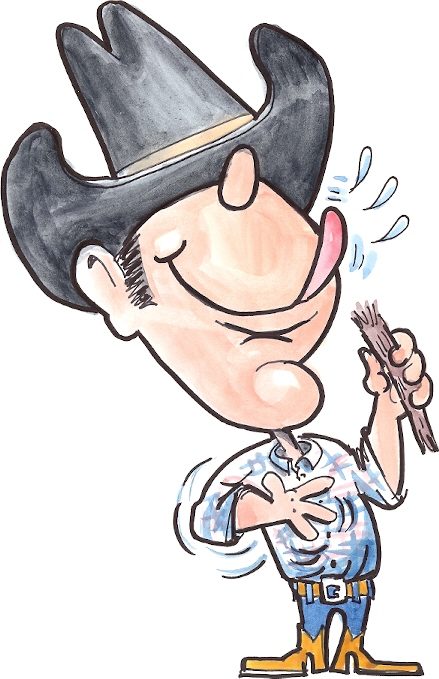There are several cuts of beef that are commonly used to make jerky due to their leanness and texture. You can use this same basic guide for Buffalo/Bison as well.

Here’s a list of cuts of beef that are often preferred for making jerky.
- Top Round: This is one of the most popular cuts for beef jerky. It’s lean and has a good balance of tenderness and flavor. This is where London Broil comes from.
- Bottom Round: Another excellent choice for jerky, as it’s a lean cut from the hindquarters of the cow. It is the least tender of the Round Cuts, but still a great choice.
- Eye of Round: Like the top round, the eye of round is a very lean, very tender, and well-suited cut for jerky.
- Sirloin Tip: This cut is slightly more tender than the round cuts and can produce flavorful jerky. If you can find this, go ahead and give it a try. It’s highly recommended.
- Flank Steak: While it’s not as lean as some other cuts, flank steak is known for its bold flavor and can be used for jerky when trimmed well. Be sure to cut against the grain.
- Pectoral: Also known as Special Trim. It is excellent for slow cooking, as in jerky. It comes from the same area next to the Flank Steak.
- London Broil: Often labeled as such in stores, it’s typically a thick top round or sirloin tip steak that can be sliced into jerky strips.
- Chuck Roast: Although it’s higher in fat, it can be used to make tasty, slightly more tender jerky. Be sure to trim excess fat.
- Filet Mignon: This tender cut is typically used for higher-end, gourmet jerky due to its tenderness and mild flavor.
- Tri-Tip: A flavorful and well-marbled cut, tri-tip can be used for jerky when trimmed of excess fat. (This is one of my favorite meats in Brazilian BBQ, in Brazil)
- Blade Meat: AKA Lifter, or Cap and Wedge Meat. It comes from above the rib section with a nice beef flavor and is quite tender.
- Brisket: While brisket is often slow-cooked or smoked, it can also be used to make jerky with the right preparation. Try to find a lean piece to make jerky from. Great when using a smoker.
- Tenderloin: Similar to filet mignon, the tenderloin is a very tender cut suitable for gourmet jerky.
- Ribeye: This well-marbled cut can produce rich and flavorful jerky, although it’s typically not as lean as other options.
When making jerky, it’s important to trim away any visible fat, as fat can go rancid during the drying process and shorten the jerky’s shelf life. Additionally, some cuts may require different slicing techniques to achieve the desired texture, so consider experimenting to find the right cut and thickness for your preferred jerky style.
When shopping for beef for jerky, you want to look for less fat and less marbling. Remember, fat can go rancid, even when dried. Also, fat does not reduce or shrink at the same rate as the meat. So, choose wisely.
If you do choose meat with a higher fat content, I would suggest storing it in the fridge or even freezing it and only taking out what you will eat in a couple of days at a time. I know several people who freeze all their jerky, except for what they will eat. When they take it out of the freezer, it doesn’t take long to thaw out to enjoy. It also tastes as fresh as when it was made. Just keep it well sealed so it doesn’t get freezer burn.
Do you have a favorite cut of meat? Let us know.
Related Articles and Recipes
Homemade Beef Jerky – Beef Jerky is the most popular + Recipes.
Beef Jerky Recipes #2 – More Recipes with Flank Steak & Brisket
